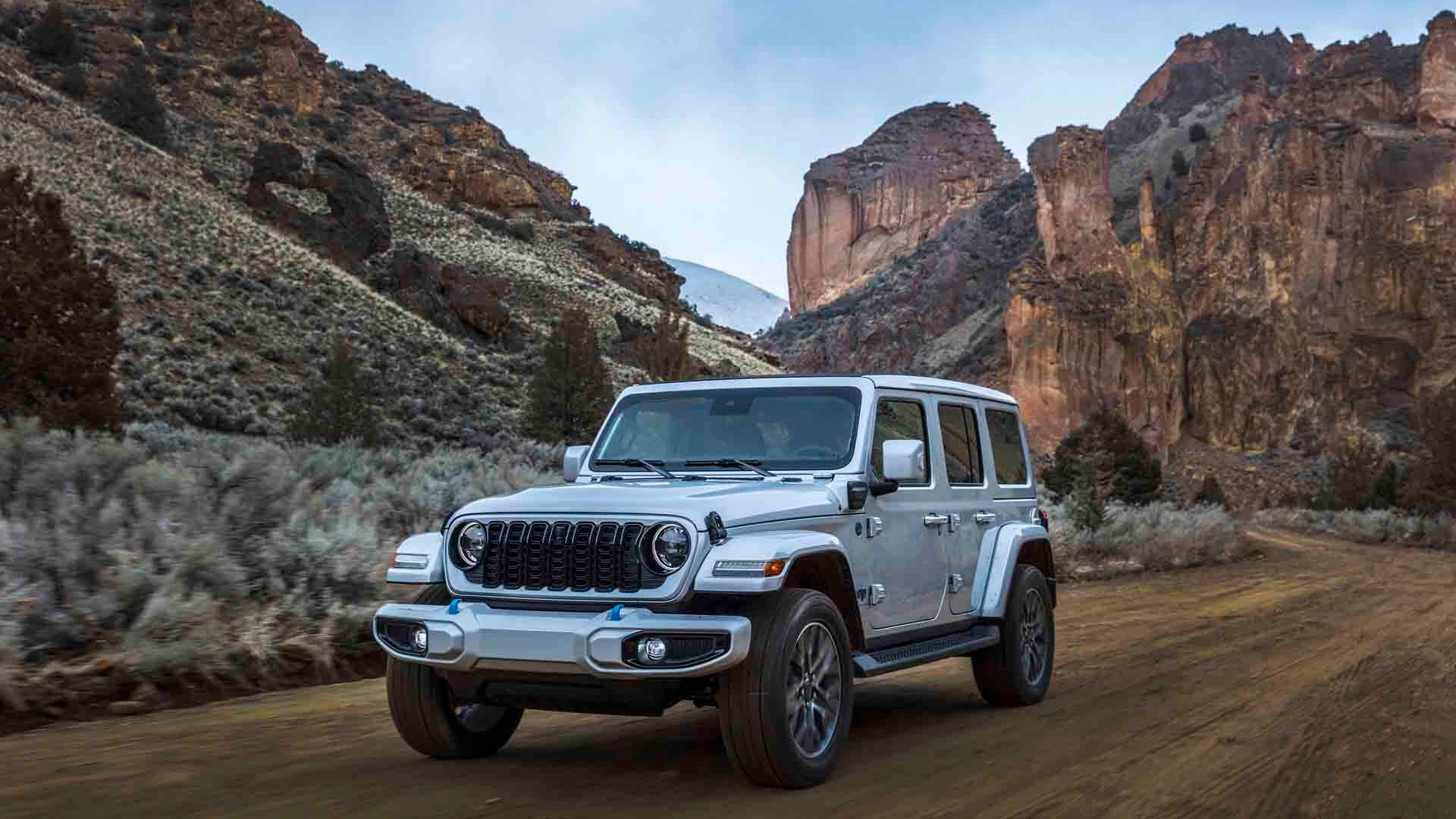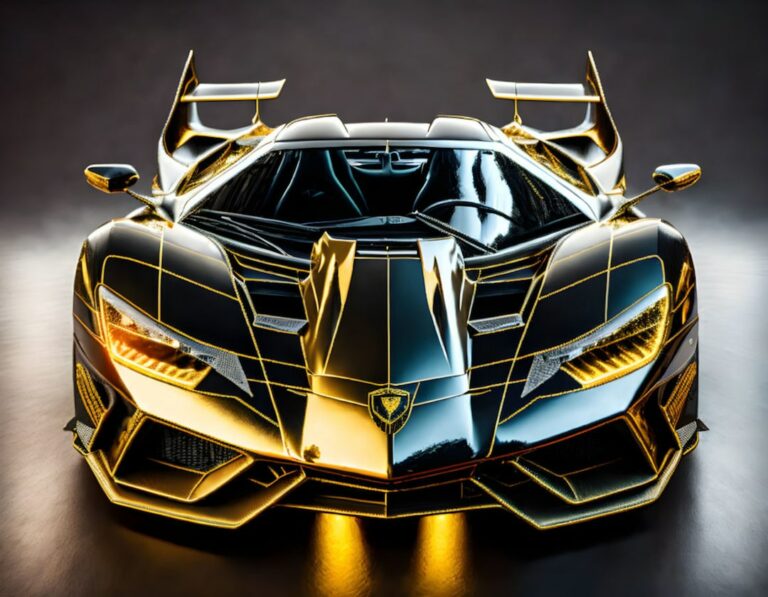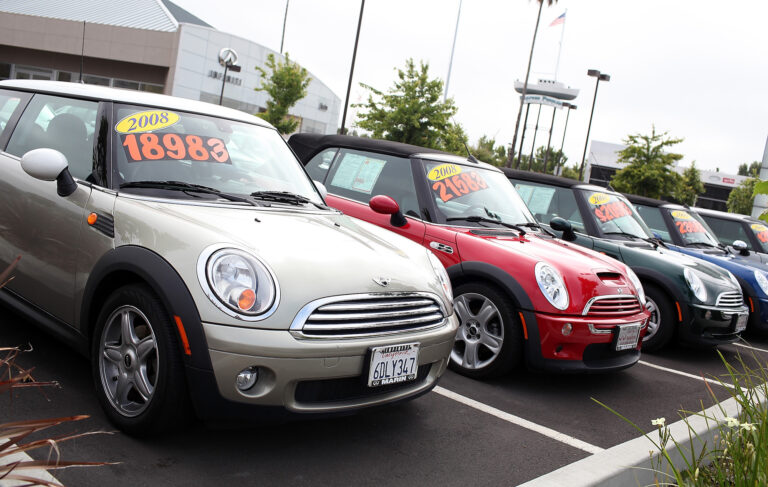Which Jeep Wrangler To Buy: Your Ultimate Guide to Choosing the Right Icon
Which Jeep Wrangler To Buy: Your Ultimate Guide to Choosing the Right Icon jeeps.truckstrend.com
The Jeep Wrangler isn’t just a vehicle; it’s a statement, a lifestyle, and a passport to adventure. Few automobiles evoke such a strong sense of freedom, capability, and raw outdoor spirit. From conquering rocky trails to cruising city streets with the top down, the Wrangler offers an unparalleled driving experience. However, stepping into the world of Wranglers can be daunting for the uninitiated. With a lineage spanning decades, multiple generations, countless trim levels, and a vast array of options, deciding "Which Jeep Wrangler to buy?" requires careful consideration. This comprehensive guide will navigate you through the crucial factors, helping you pinpoint the perfect Wrangler that aligns with your needs, budget, and adventurous spirit.
Understanding Your Needs: The Foundation of Your Decision
Which Jeep Wrangler To Buy: Your Ultimate Guide to Choosing the Right Icon
Before diving into models and specifications, the most critical step is a candid self-assessment of your primary use case and lifestyle. Your ideal Wrangler will be vastly different if you’re an extreme off-roader versus someone seeking a stylish daily driver with occasional dirt road capability.
-
Primary Purpose:
- Serious Off-Roading: Do you plan to tackle challenging trails, rock crawling, or deep mud? You’ll need specific features like locking differentials, a low transfer case gear ratio, and robust axles.
- Light Off-Roading/Overlanding: Are you more inclined towards dirt roads, forest trails, and camping trips? Most Wranglers can handle this with ease, potentially saving you money on top-tier trims.
- Daily Driver/Commuter: Will the Wrangler be your primary vehicle for work, school, and errands? Comfort, on-road manners, and fuel economy might take precedence over extreme off-road prowess.
- Family Vehicle: Do you need space for passengers and cargo? This will strongly influence your choice between two-door and four-door models.

-
Lifestyle & Environment:

- Urban/Suburban: You might prioritize features like parking sensors, advanced infotainment, and a smoother ride.
- Rural/Outdoor Enthusiast: Durability, ground clearance, and ease of cleaning might be more important.
- Budget & Long-Term Costs: Beyond the purchase price, consider fuel economy, insurance, maintenance, and the cost of potential modifications. Wranglers, especially modified ones, can have higher running costs than comparable SUVs.
Generations of the Wrangler: A Lineage of Legends
Jeep Wranglers are broadly categorized by their generation, each offering distinct characteristics, technologies, and price points.
- TJ (1997-2006): Known for its coil spring suspension (a significant upgrade from the leaf-sprung YJ), classic round headlights, and simple, robust design. TJs are popular among purists and those looking for a capable off-roader on a budget, often serving as excellent platforms for custom builds. They lack many modern creature comforts and safety features.
- JK (2007-2018): This generation revolutionized the Wrangler by introducing the four-door Unlimited model, dramatically expanding its appeal. JKs brought more refined interiors, improved on-road handling (compared to TJs), and a vast aftermarket support. They are a sweet spot for many buyers, offering a blend of modern convenience and classic ruggedness at a more accessible price point than the JL.
- JL (2018-Present): The current generation represents the most significant leap forward in terms of refinement, technology, and efficiency. JLs feature updated engines (including turbocharged and hybrid options), improved steering and ride quality, more advanced safety features, and a thoroughly modernized interior. While retaining the iconic look and legendary off-road capability, the JL is a much more comfortable and connected vehicle for daily driving.
Older Models (YJ/CJ): While historically significant, YJ (1987-1995, square headlights) and CJ (1945-1986) models are typically considered collector’s items or project vehicles due to their age, simpler mechanics, and lack of modern safety features. They are generally not recommended for first-time buyers seeking a reliable daily driver.
Two-Door vs. Four-Door: A Practical Choice
This is one of the most fundamental decisions, directly impacting practicality and off-road dynamics.
-
Two-Door Wrangler (Wrangler):
- Pros: Shorter wheelbase (better breakover angle, tighter turning radius for off-roading), lighter, classic "Jeep" aesthetic, easier to park in tight spots.
- Cons: Limited rear passenger space, minimal cargo room, can feel more "bouncy" on-road due to shorter wheelbase.
- Best For: Solo adventurers, couples, serious off-roaders prioritizing maneuverability, or those seeking a nostalgic experience.
-
Four-Door Wrangler (Wrangler Unlimited):
- Pros: Significantly more passenger space, ample cargo room, better towing capacity, more stable on-road (due to longer wheelbase), more versatile for families or group outings.
- Cons: Longer wheelbase (can make tight turns or cresting obstacles more challenging off-road), heavier, slightly higher price point.
- Best For: Families, those needing more cargo space, daily drivers, or overlanders who prioritize comfort and capacity.
Trim Levels Explained: From Sport to Rubicon
Jeep offers a range of trim levels, each designed with a specific buyer in mind, influencing features, capabilities, and price.
- Sport/Sport S: The entry-level trims. They offer the essential Wrangler experience with basic features. They are highly capable off-road in stock form and serve as an excellent canvas for aftermarket modifications. The Sport S adds power windows, air conditioning, and alloy wheels.
- Best For: Budget-conscious buyers, those who plan extensive modifications, or purists who want the core Wrangler experience.
- Willys: A nod to Jeep’s military heritage, the Willys trim adds a limited-slip differential, Rubicon shocks, rock rails, and larger tires, enhancing off-road capability without the full Rubicon price tag.
- Best For: Enthusiasts wanting more off-road capability than a Sport, but don’t need or want to pay for a full Rubicon.
- Sahara: Positioned as the "luxury" Wrangler, the Sahara focuses on comfort, technology, and aesthetics. It typically features body-colored fender flares and hardtop, larger wheels, more premium interior materials, and advanced infotainment options. While still capable, it’s geared more towards urban and suburban drivers.
- Best For: Daily drivers, those prioritizing comfort and technology, or buyers who appreciate a more refined look.
- Rubicon: The undisputed king of off-road capability in the Wrangler lineup. The Rubicon comes standard with heavy-duty Dana 44 axles, electronic locking front and rear differentials, an electronic sway bar disconnect (for increased wheel articulation), a lower "4LO" transfer case gear ratio, larger off-road tires, and rock rails.
- Best For: Serious off-roaders, rock crawlers, or anyone who demands the absolute best factory off-road performance. If you don’t plan to use these specific features, you might be overpaying.
- High Altitude/Special Editions: These trims often build on the Sahara or Rubicon, adding unique cosmetic elements, premium interior upgrades, or specific feature packages.
- Best For: Buyers seeking exclusivity, premium features, or a distinctive look.
- 4xe (JL only): A plug-in hybrid electric vehicle (PHEV) that combines a 2.0L turbo engine with electric motors. Offers impressive torque, electric-only range for commuting, and maintains the Wrangler’s off-road prowess.
- Best For: Eco-conscious buyers, those with shorter commutes who can leverage electric range, or those seeking instant electric torque for off-roading.
- Rubicon 392 (JL only): Powered by a monstrous 6.4L V8 engine, this is the most powerful and performance-oriented Wrangler ever made. It’s designed for high-speed desert running and ultimate bragging rights.
- Best For: Enthusiasts prioritizing raw power and performance, with a substantial budget.
Engine Options: Powering Your Adventure
The choice of engine impacts performance, fuel economy, and driving feel.
- 3.6L Pentastar V6 (Standard on most JK/JL): The tried-and-true workhorse. Reliable, good balance of power and efficiency, and widely supported by the aftermarket.
- 2.0L Turbo I4 (JL only): Offers more torque at lower RPMs and generally better fuel economy, especially in city driving. It’s a modern, peppy engine.
- 3.0L EcoDiesel V6 (Available on some JLs, now discontinued for new orders): Delivers massive torque, excellent towing capability, and impressive fuel range. It uses diesel fuel and comes at a premium.
- 4xe (JL Plug-in Hybrid): Combines the 2.0L turbo with electric motors, offering strong acceleration and the ability to drive on electricity alone for shorter distances.
- 6.4L V8 (JL Rubicon 392): For those who crave maximum power and a thrilling exhaust note.
Key Features & Options to Consider
- Hardtop vs. Soft Top: Hardtops offer better security, insulation, and noise reduction. Soft tops provide the ultimate open-air experience but are less secure and noisier. Many owners opt for both or an aftermarket hybrid solution.
- Infotainment & Technology: Newer JL models offer Uconnect systems with larger touchscreens, Apple CarPlay, Android Auto, and integrated navigation. Decide how important these modern conveniences are to you.
- Safety Features: While Wranglers are not known for their abundance of driver-assist features, newer JLs offer blind-spot monitoring, rear cross-path detection, and rear parking sensors.
- Axle Ratios: These determine how many times the driveshaft turns for each rotation of the wheel. Higher numbers (e.g., 4.10) mean more torque for off-roading or larger tires but lower fuel economy. Lower numbers (e.g., 3.45) are better for highway cruising.
- Aftermarket Potential: The Wrangler boasts the largest aftermarket in the automotive industry. Factor in whether you plan to modify your Jeep with lift kits, larger tires, bumpers, winches, etc. This can significantly add to your overall cost but also to the vehicle’s capability and personalization.
New vs. Used: The Financial Equation
- Buying New:
- Pros: Full warranty, latest technology and safety features, factory customization options, no prior wear and tear.
- Cons: Higher purchase price, immediate depreciation, potentially long wait times for specific configurations.
- Buying Used:
- Pros: Lower entry price, less depreciation, vast selection of models and trims, potential for pre-installed desirable modifications at a lower overall cost.
- Cons: No factory warranty (or limited), potential for hidden issues (rust, poor maintenance, badly done modifications), higher mileage.
- Tips for Used: Always get a pre-purchase inspection by a trusted mechanic, especially one familiar with Wranglers. Check for rust (frame, suspension components), evidence of off-road abuse, and the quality of any aftermarket modifications.
Practical Advice and Actionable Insights
- Test Drive, Test Drive, Test Drive: Drive different generations, two-door, and four-door models, and various engine options if possible. Pay attention to on-road manners, noise levels, and visibility. If feasible, take it on a light trail to feel its capabilities.
- Join the Community: Connect with local Jeep clubs or online forums. Owners are a wealth of knowledge and can offer insights into specific models, common issues, and recommended modifications.
- Factor in Modifications: If you plan to lift your Wrangler or add larger tires, remember this will impact fuel economy, ride quality, and potentially long-term wear on components. Budget for these additions.
- Understand the "Jeep Wave": Owning a Wrangler comes with a unique camaraderie. Be prepared to wave to fellow Jeep owners!
Price Guide: Estimated Ranges for Which Jeep Wrangler To Buy
Please note that these are estimated price ranges and can vary significantly based on year, mileage, condition, trim level, engine, options, location, and market demand.
| Model/Generation | Trim Level | Estimated New Price Range (Current JL) | Estimated Used Price Range (JK/JL) | Key Features/Notes |
|---|---|---|---|---|
| JL (2018-Present) | Sport/Sport S | $32,000 – $40,000 | $28,000 – $38,000 | Entry-level, basic but capable. Good foundation for mods. |
| Willys | $38,000 – $45,000 | $35,000 – $42,000 | Enhanced off-road capability (LSD, Rubicon shocks, rock rails) above Sport. | |
| Sahara | $45,000 – $55,000 | $40,000 – $50,000 | More comfort, tech, body-colored fenders. Geared towards urban/suburban use. | |
| Rubicon | $48,000 – $60,000+ | $42,000 – $55,000+ | Ultimate off-road performance (lockers, sway bar disconnect, 4:1 transfer case, Dana 44s). | |
| 4xe (PHEV) | $55,000 – $70,000+ | $48,000 – $65,000+ | Hybrid efficiency with electric range, powerful. Available in various trims (Sahara, Rubicon, Willys). | |
| Rubicon 392 | $85,000 – $100,000+ | $75,000 – $90,000+ | High-performance 6.4L V8 engine. Fastest and most expensive factory Wrangler. | |
| JK (2007-2018) | Sport/Sport S | N/A | $15,000 – $28,000 | First 4-door Wrangler, popular choice for value. Good aftermarket. |
| Sahara | N/A | $18,000 – $32,000 | More refined interior than Sport, body-colored options. | |
| Rubicon | N/A | $22,000 – $38,000 | Proven off-road capability. A great value for serious off-roading. | |
| TJ (1997-2006) | Sport/Sahara/Rubicon | N/A | $8,000 – $20,000 | Classic design, coil springs. Great for purists, modders, or a secondary off-road vehicle. Prices vary wildly with condition and modifications. |
Frequently Asked Questions (FAQ)
Q1: Is a Jeep Wrangler a good daily driver?
A1: Modern JL Wranglers (2018-present) are significantly more refined and comfortable for daily driving than previous generations, with improved steering, ride quality, and technology. Older generations (JK, TJ) can be noisier, have a less refined ride, and offer fewer creature comforts, making them less ideal for long commutes but still manageable for many.
Q2: Are Jeep Wranglers reliable?
A2: Wranglers have a reputation for being rugged and durable, especially their powertrains. However, they are also known for some quirks, and their off-road design can lead to more maintenance needs, especially if regularly driven off-road or heavily modified. Regular maintenance is key to reliability.
Q3: What’s the best Wrangler for off-roading?
A3: For factory capability, the Rubicon trim (in any generation) is unequivocally the best, thanks to its specialized off-road hardware. However, even a base Sport model is incredibly capable with the right tires and driver skill. For extreme rock crawling, the two-door model often has an advantage due to its shorter wheelbase.
Q4: Can I take the doors off any Jeep Wrangler?
A4: Yes, all modern Jeep Wranglers (CJ, YJ, TJ, JK, JL) are designed with removable doors and tops, offering that unique open-air driving experience. Always check local laws regarding driving without doors and ensure you have proper side mirrors.
Q5: Do Wranglers have good gas mileage?
A5: Generally, no. Wranglers are not known for their fuel efficiency due to their aerodynamic profile, weight, and robust drivetrain components. The 2.0L turbo engine and the 4xe hybrid offer the best fuel economy among the current lineup, while the V6 and V8 options are less efficient. Older models are typically less fuel-efficient.
Q6: What’s the best time to buy a Wrangler?
A6: Similar to other vehicles, the end of the calendar year (November/December) or the end of a model year often sees dealers offering incentives to clear inventory. When a new generation or significant refresh is announced, prices on the outgoing model might drop. For used Wranglers, the market can fluctuate, but consistent demand means good deals can be found year-round with diligent searching.
Conclusion
Choosing the right Jeep Wrangler is a deeply personal journey. It’s about more than just horsepower or axle ratios; it’s about matching a vehicle’s legendary spirit with your own adventurous aspirations. By carefully considering your needs, understanding the differences between generations and trim levels, and evaluating the new versus used market, you can confidently select the Wrangler that will serve as your perfect companion, whether you’re tackling the toughest trails or simply enjoying the freedom of the open road with the wind in your hair. The Jeep Wrangler is more than just a car; it’s an invitation to explore, customize, and become part of a passionate community. Happy Jeeping!




